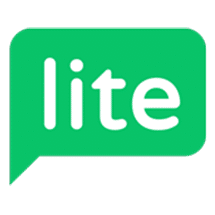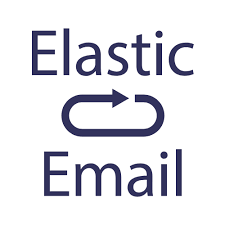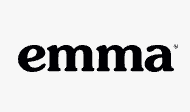Woodpecker vs Mailchimp
Hyperise integrates with 100's of sales and marketing tools, many of which are in the Email Marketing category. With so many to choose from it's sometimes hard to know which is best, but don't worry, we've got your covered.
In this comparison guide we're going to look at the Highlights, Pros, Cons and Pricing of Woodpecker and Mailchimp. We'll also delve into the details of which offers the best personalization options within Email Marketing, with there respective Hyperise integrations

Woodpecker
Pricing: Sure, the Woodpecker Email Marketing platform offers three pricing plans: 1. "Starter" plan for $40/month (billed annually) which allows you to send up to 1,000 emails per month. 2. "Pro" plan for $50/month (billed annually) which allows you to send up to 3,000 emails per month. 3. "Enterprise" plan for custom pricing which offers higher volume and customized features.
Vs
Mailchimp
Pricing: Sure! Mailchimp offers four pricing plans: 1. Free: This plan includes basic email marketing features for up to 2,000 contacts and 10,000 monthly email sends. 2. Essentials: This plan starts at $9.99/month and includes additional features such as A/B testing, custom branding, and more. 3. Standard: This plan starts at $14.99/month and includes advanced automation, retargeting ads, and more. 4.Woodpecker vs Mailchimp Highlights
Woodpecker and Mailchimp are both email marketing platforms, but they have some key differences.
First, Woodpecker is focused on personalized outreach and follow-up for sales teams, while Mailchimp is targeted at small and medium-sized businesses looking for a more general email marketing solution. Woodpecker offers AI-powered email sequencing and automated follow-up features that aim to help sales teams streamline their outreach and increase conversions.
Second, Woodpecker has more advanced A/B testing capabilities than Mailchimp, allowing users to test different subject lines, email bodies, and send times to optimize their email campaigns. Mailchimp, on the other hand, offers basic A/B testing features.
Finally, Woodpecker's pricing is based on the number of scheduled emails and users, while Mailchimp's pricing is based on the number of subscribers. This means that Woodpecker may be more cost-effective for businesses that send a high volume of targeted emails to smaller lists, while Mailchimp may be better suited for businesses with larger email lists.
Overall, while both platforms offer email marketing capabilities, Woodpecker is more focused on personalized outreach and sales automation, while Mailchimp is a more general email marketing solution.
Woodpecker vs Mailchimp Pros
Woodpecker Pros
- Woodpecker has an easy-to-use interface and simpler navigation compared to Mailchimp.
- Woodpecker offers better personalization and customization options for email campaigns.
- Woodpecker allows more freedom in creating and editing email templates.
- Woodpecker's email scheduling and follow-up sequence settings are more advanced and flexible.
- Woodpecker has a more affordable pricing structure compared to Mailchimp, especially for smaller businesses with lower email volume.
- Woodpecker has better customer support options, including direct access to support agents and personalized onboarding assistance.
Mailchimp Pros
- Mailchimp offers a free plan, whereas Woodpecker does not have a free plan
- Mailchimp has a user-friendly drag and drop editor for designing email campaigns
- Mailchimp has a variety of professionally designed templates to choose from
- Mailchimp has advanced automation features to streamline and personalize email campaigns
- Mailchimp offers built-in analytics and reporting to track the performance of email campaigns
- Mailchimp has a list of integrations with a wide range of third-party apps and services to extend its functionality.
- Note: Woodpecker is not strictly an Email Marketing Platform. It is more of a sales automation software. Therefore, its primary focus is not email design & analytics, and it has a different set of features that are more suited for B2B outreach.
Woodpecker vs Mailchimp Cons
Woodpecker Cons
- Limited automation features
- Limited integrations with other apps and platforms
- Limited email template options
- No pre-built landing page builder
- No A/B testing feature for subject lines or email content
- No personalized product recommendations feature
- No real-time click tracking and reporting
- Limited segmentation options
- No RSS-to-Email feature
- Limited email design flexibility compared to Mailchimp
Mailchimp Cons
- Mailchimp does not have as advanced email personalization features as Woodpecker.
- Mailchimp only allows you to send emails to lists you have created, whereas Woodpecker lets you create dynamic email campaigns.
- Mailchimp focuses more on mass email marketing, while Woodpecker is geared towards personalized, targeted email outreach.
- Mailchimp does not have as strong of a tracking and analytics system as Woodpecker.
- Mailchimp has more limited integrations with other tools compared to Woodpecker.
Woodpecker & Mailchimp Hyperise Integrations
Woodpecker uses the Image embed method to integrate with Hyperise, giving a simple way to add personalized images to your messages.
Woodpecker makes the following data points available to Hyperise, to enable personalization in images used in outreach and linked out to your personalized website landing pages.

- Using business Email passed from Woodpecker, Hyperise is able to enrich business logo and website screenshots. In some cases, with a business Email we're also able to enrich profile images, subject to the business email having a publicly available profile.
- Using business Website passed from Woodpecker, Hyperise is able to enrich business logo and website screenshots.
- Business name
Woodpecker Integration Guide
Mailchimp uses the HTML code embed method to integrate with Hyperise, giving a simple way to add personalized images to your messages.
Mailchimp makes the following data points available to Hyperise, to enable personalization in images used in outreach and linked out to your personalized website landing pages.
- Using business Email passed from Mailchimp, Hyperise is able to enrich business logo and website screenshots. In some cases, with a business Email we're also able to enrich profile images, subject to the business email having a publicly available profile.
Mailchimp Integration Guide
 vs
vs 




 vs
vs  vs
vs  vs
vs  vs
vs  vs
vs  vs
vs  vs
vs  vs
vs  vs
vs  vs
vs  vs
vs  vs
vs  vs
vs  vs
vs 
 vs
vs  vs
vs  vs
vs  vs
vs  vs
vs  vs
vs 
 vs
vs 






 vs
vs 













